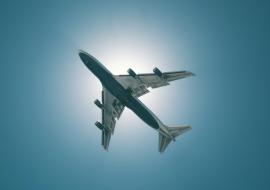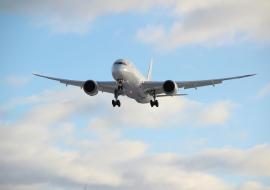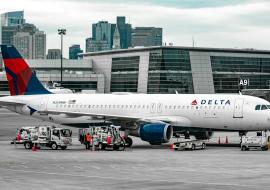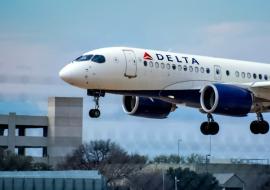Airline Industry Hits Snags on its Way to Cut Emissions
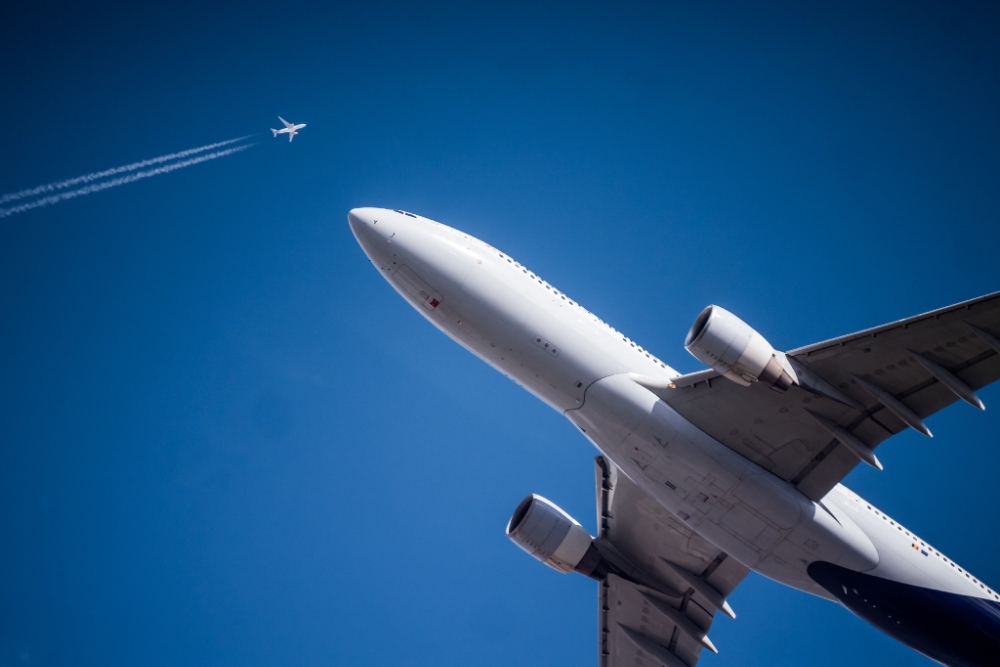
(AP) - Airplanes are a minor contributor to global greenhouse-gas emissions, but their share is sure to grow as more people travel in coming years — and that has the aviation industry facing the prospect of tighter environmental regulations and higher costs.
The industry has embraced a goal of reaching net-zero greenhouse-gas emissions by 2050. Experts who track the issue are skeptical.
Until the COVID-19 pandemic caused travel to slump, airlines were on a steady course of burning more fuel, year after year. Today’s aircraft engines are the most efficient ever, but improvements in reducing fuel burn are agonizingly slow — about 1% a year on average.
At Monday’s opening of a huge aviation industry show near London, discussion about climate change replaced much of the usual buzz over big airplane orders.
The weather was fitting. The Farnborough International Airshow opened as U.K. authorities issued the first extreme heat warning in England’s history. Two nearby airports closed their runways, one reporting that heat caused the surface to buckle.
As airlines confront climate change, the stakes could hardly be higher. Jim Harris, who leads the aerospace practice at consultant Bain & Co., says that with airlines recovering from the jolt of the pandemic, hitting net-zero by 2050 is now the industry’s biggest challenge.
“There is no obvious solution, there is no one technology, there is no one set of actions that are going to get the industry there,” Harris says. “The amount of change required, and the timeline, are big issues.”
Aviation releases only one-sixth the amount of carbon dioxide produced by cars and trucks, according to World Resources Institute, a nonprofit research group based in Washington. However, aviation is used by far fewer people per day.
Jet fuel use by the four biggest U.S. airlines – American, United, Delta and Southwest — rose 15% in the five years leading up to 2019, the last year before air travel dropped, even as they updated their fleets with more efficient planes.
Airbus and Boeing, the world’s two biggest aircraft makers, both addressed sustainability during Monday’s opening day at Farnborough, although they approached the issue in different ways.
Europe’s Airbus and seven airline groups announced a venture in West Texas to explore removing carbon dioxide from the air and injecting it deep underground, while Boeing officials said sustainable aviation fuel, or SAF, will be the best tool — but not the only one — to reduce emissions.
Last September, airline leaders and President Joe Biden touted an agreement to cut aircraft emissions 20% by 2030 by producing 3 billion gallons of SAF by then and replacing all conventional jet fuel by 2050. Climate experts praised the idea but said the voluntary targets are overly optimistic. Current SAF production is around 5 million gallons per year.
Sustainable fuel is biofuel made from cooking oil, animal fats, municipal waste or other feedstocks. Its chief advantage is that it can be blended with conventional fuel to power jet engines. It has been used many times on test flights and even regular flights with passengers on board.
Among SAF’s drawbacks are the high cost — about three times more than conventional jet fuel. As airlines seek to buy and use more of it, the price will rise further. Advocates are lobbying for tax breaks and other incentives to boost production.
Policymakers see SAF as a bridge fuel — a way to reduce emissions until more dramatic breakthroughs, such as electric- or hydrogen-powered planes, are ready. Those technologies might not be widely available for airline-size planes for two or three decades.
Several companies are designing and starting to build electric-powered planes, but most are small aircraft that take off and land vertically, like helicopters, and they are about the same size — with room for only a few passengers.
Electric-powered planes big enough to carry around 200 passengers — a medium-size jet by airline standards — would require much bigger batteries for longer flights. The batteries would weigh about 40 times more than jet fuel to produce the same amount of power, making electric airliners impractical without huge leaps in battery technology.
Hydrogen, on the other hand, “is a very light fuel,” says Dan Rutherford, who leads the study of decarbonizing cars and planes for an environmental group, the International Council on Clean Transportation. “But you need a lot of volume to store it, and the fuel tanks themselves are heavy.”
Despite that, Rutherford remains “cautiously optimistic” about hydrogen. His group believes that by 2035, there could be hydrogen-powered planes capable of flying about 2,100 miles (3,380 kilometers). Others, however, see obstacles including the need for massive and expensive new infrastructure at airports to store hydrogen that has been chilled into liquid form.







